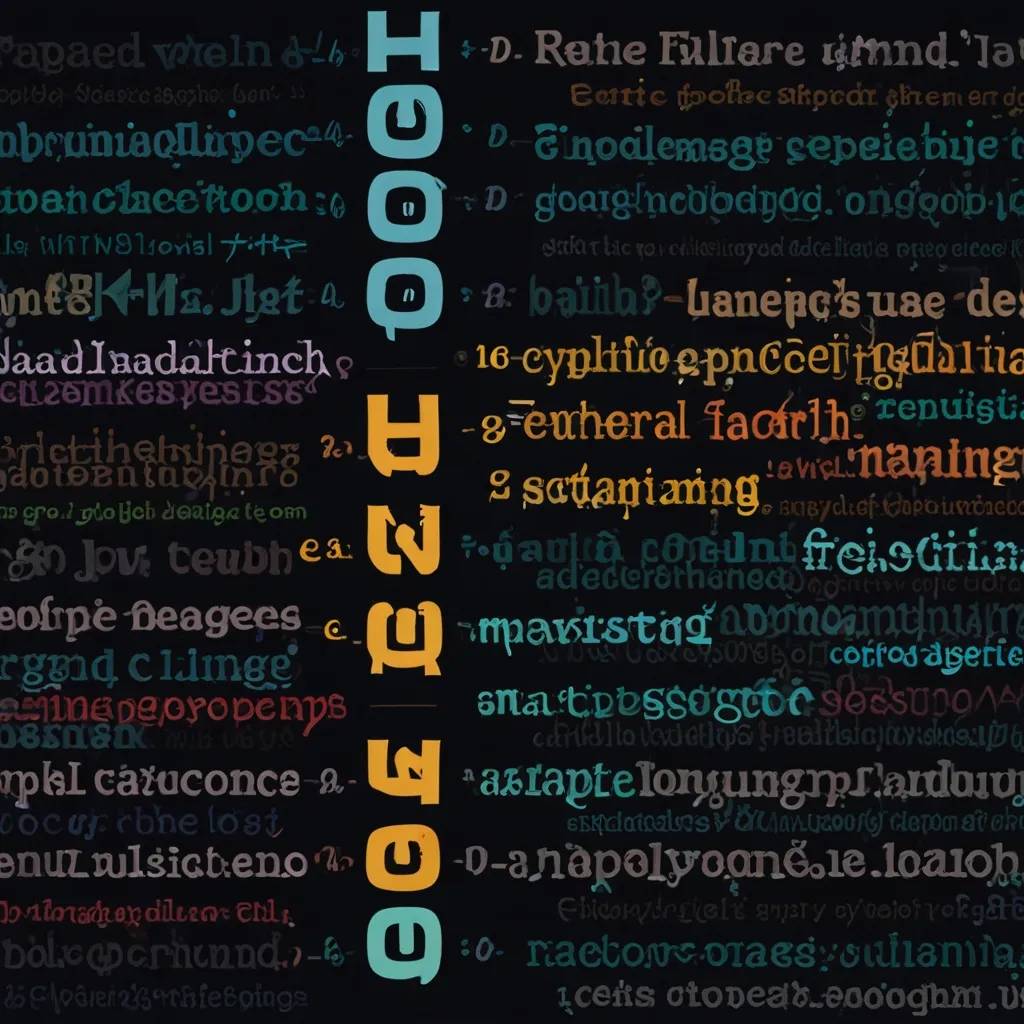Mastering Regular Expressions in JavaScript
Ever found yourself wading through lines of text, swatting at rogue spaces, random characters, or patterns you need to validate? Enter the hero of the day: Regular Expressions, or regex for short. A mighty tool in any developer’s toolkit, regex lets you hunt down and manipulate patterns in strings like a pro. Essential for tasks like validating user inputs, searching specific texts, and even altering segments of a string, regex is a game-changer. Let’s dive into the delightful chaos of regex, JavaScript-style.
Crafting Regular Expressions
Creating regex in JavaScript comes in two main flavors. The first way is through a regex literal – basically a pattern sandwiched between slashes. Imagine jotting down a simple expression like:
const re = /ab+c/;
With this method, JavaScript knows what it needs to hunt for as soon as the script loads. Pretty efficient if your pattern stays put.
The second style summons the constructor function of the RegExp object. It looks a bit like this:
const re = new RegExp("ab+c");
This one’s got a bit more flexibility, fetching and compiling the regex at runtime. Perfect for when your pattern could change based on different user inputs or some other dynamic source.
Decoding Regex Patterns
Regex patterns can swing from straightforward notes to veritable symphonies of complexity. Consider the humble pattern /abc/, which simply matches the sequence “abc”:
const str = "Hi, do you know your abc's?";
const pattern = /abc/;
const result = pattern.test(str);
console.log(result); // Output: true
For a bit more spice, consider /ab*c/. That asterisk means the ‘b’ can show up zilch times or a bazillion times – it’s not picky.
const str = "abbbc";
const pattern = /ab*c/;
const result = pattern.test(str);
console.log(result); // Output: true
Parentheses and Groups
Regex isn’t just about finding patterns; sometimes you need to remember what you caught. That’s where parentheses come in – they let you group parts of the pattern and capture them for later:
const str = "Chapter 1.2";
const pattern = /Chapter (\d+)\.\d*/;
const match = pattern.exec(str);
console.log(match[1]); // Output: 1
Here, the parentheses around \d+ grab the digits, which you can pull out and use elsewhere. Handy, right?
Playing with Regex Methods
Regex, meet methods. Methods, meet regex. JavaScript offers several methods that let you wield your regex effectively. Here’s a quick rundown:
test() Method
This method checks if your pattern shakes hands with your string. It returns true if it’s a match; otherwise, it gives you a cold false.
let pattern = /hello/;
let str = "hello world";
let result = pattern.test(str);
console.log(result); // Output: true
exec() Method
Want more detail about your match? exec() returns an array filled with match information or null if it comes up empty.
let pattern = /world/;
let str = "hello world";
let result = pattern.exec(str);
console.log(result); // Output: ["world", index: 6, input: "hello world"]
match() Method
Check for pattern occurrences. Without the g (global flag), it shows only the first match. With g, it unveils all matches as an array.
let str = "hello world, world!";
let pattern = /world/g;
let result = str.match(pattern);
console.log(result); // Output: ["world", "world"]
matchAll() Method
If you’re the types who like iterators, matchAll() returns one containing all matches of your pattern.
let str = "hello world, world!";
let pattern = /world/g;
let result = str.matchAll(pattern);
for (let match of result) {
console.log(match);
// Outputs: ["world", index: 6, input: "hello world, world"]
// Add more matches as they are found
}
search() Method
Just checking if a pattern is lounging within your string? search() gives you the starting index or a grumpy -1.
let str = "hello world";
let pattern = /world/;
let result = str.search(pattern);
console.log(result); // Output: 6
replace() and replaceAll() Methods
These are your go-tos for swapping out patterns. replace() handles the initial occurrence, while replaceAll() goes medieval on all matches.
let str = "hello world, world!";
let pattern = /world/g;
let replacement = "universe";
let result = str.replaceAll(pattern, replacement);
console.log(result); // Output: "hello universe, universe!"
split() Method
Time to slice and dice. split() cuts a string into an array based on your pattern.
let str = "hello world, world!";
let pattern = /, | /g;
let result = str.split(pattern);
console.log(result); // Output: ["hello", "world", "world", "!"]
Regex Best Practices
Like any tool, regex demands respect and understanding. Here’s how to make regex your buddy and keep it that way:
Know Thy Syntax: Metacharacters (those special, rule-defining crests) and normal characters are your regex alphabet. Learn their grammar.
Test, Test, Test: Regex can be a fickle creature. Test with a variety of inputs to ensure robust performance.
Performance Matters: Optimize your patterns to keep things running smoothly. Simplify your regex where possible.
Use Built-ins: JavaScript has pre-made tools for many common string tasks. Assess before you regex – sometimes the built-ins do the job just fine.
Document Complex Patterns: Commenting inside your regex using the (?#comment) syntax can help you (and others) decode complex patterns later.
Break Down the Beasts: Massive patterns? Split ‘em! Store partial patterns in variables and assemble as needed.
Lean on Resources: Tools and sites like Regex101 and RegExr are out there to help debug and learn. Use them!
Regex in Action
Let’s see regex strut its stuff in the wild:
Data Validation
From email addresses to phone numbers, regex is often the gatekeeper for valid input.
const email = "[email protected]";
const pattern = /^[a-zA-Z0-9._%+-]+@[a-zA-Z0-9.-]+\.[a-zA-Z]{2,}$/;
const result = pattern.test(email);
console.log(result); // Output: true
String Manipulation
Want to cleanse a string of unwanted characters? Regex at your service:
const str = "Th1s !s 4n ex@mpl3.";
const newStr = str.replace(/[^a-zA-Z0-9]/g, '');
console.log(newStr); // Output: "Th1s4nexmpl3"
URL Routing
Extracting parameters from URLs can be a breeze:
const url = '/users/123';
const id = url.match(/\/users\/(\d+)/)[1];
console.log(id); // Output: "123"
Wrapping Up
Regex might feel like taming a wild beast at first, but stick with it. The rewards are immense. It’s a versatile tool for pattern matching and string manipulation in JavaScript, and knowing it can greatly enhance the efficiency and accuracy of your code. Practice, play around, use the right resources, and you’ll soon be wielding regex like a seasoned pro. Keep regex in your developer arsenal, and get ready to conquer those text-processing challenges with style!






